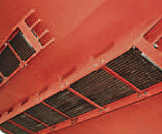cardude01
Guru
- Joined
- Nov 26, 2012
- Messages
- 5,290
- Location
- USA
- Vessel Name
- Bijou
- Vessel Make
- 2008 Island Packet PY/SP
I have told myself myself over and over that the next boat I buy will have dry exhaust and a keel cooler. It just seems the simplest setup by far, and after working on my little Yanmar I have learned to hate heat exchangers.
However, this seriously limits the possible boats for me to look at. Am I being silly with this requirement?
Are there downsides of a dry exhaust/keel cooling system that I'm missing? There must be since not many boats use this method.
However, this seriously limits the possible boats for me to look at. Am I being silly with this requirement?
Are there downsides of a dry exhaust/keel cooling system that I'm missing? There must be since not many boats use this method.


